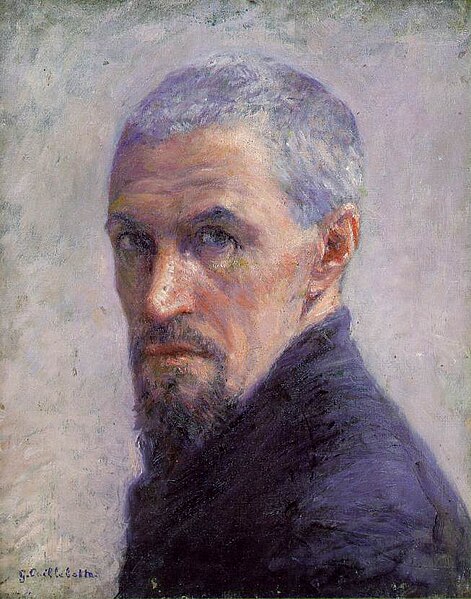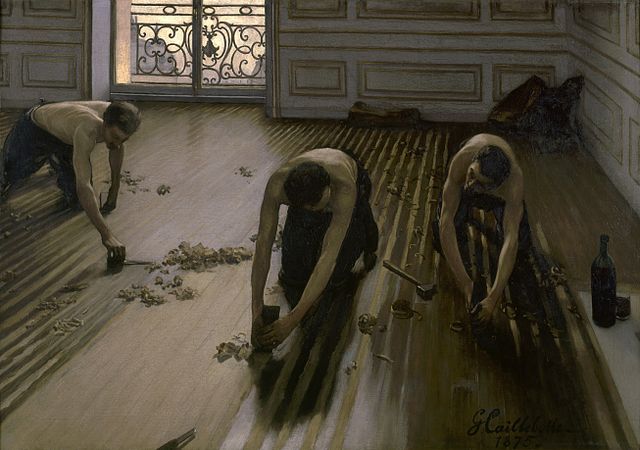Gustave Caillebotte was a French painter who was a member and patron of the Impressionists, although he painted in a more realistic manner than many others in the group. Caillebotte was known for his early interest in photography as an art form.
Caillebotte, about age 30, c. 1878
Portrait de l'artiste (Self-portrait). c. 1892. Musée d'Orsay, Paris
Gustave Caillebotte (right) and his brother, Martial
Les raboteurs de parquet (1875), a controversial realist subject, Musée d'Orsay
Impressionism was a 19th-century art movement characterized by relatively small, thin, yet visible brush strokes, open composition, emphasis on accurate depiction of light in its changing qualities, ordinary subject matter, unusual visual angles, and inclusion of movement as a crucial element of human perception and experience. Impressionism originated with a group of Paris-based artists whose independent exhibitions brought them to prominence during the 1870s and 1880s.
Impression, Sunrise, an 1872 Claude Monet oil on canvas painting now housed at Musée Marmottan Monet in Paris. This painting became the source of the movement's name after Louis Leroy's 1874 article, "The Exhibition of the Impressionists", satirically implied that the painting was, at most, a sketch.
J. M. W. Turner's atmospheric work was influential on the birth of Impressionism, here The Fighting Temeraire (1839)
Pierre-Auguste Renoir, Dance at Le Moulin de la Galette (Bal du moulin de la Galette), 1876, Musée d'Orsay, one of Impressionism's most celebrated masterpieces.
Édouard Manet, The Luncheon on the Grass (Le déjeuner sur l'herbe), 1863








